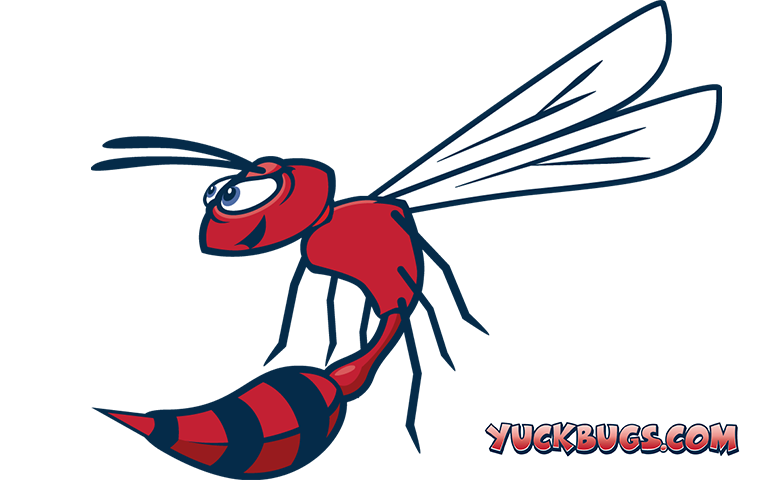There are all kinds of insect infestations that can plague a home and a family: red wasps are the worst. This paper wasp is not a very good pollinator, it does not produce honey, it doesn't make wax, and its sting can send some to the hospital. Though it does kill other insects, the benefits do not outweigh the dangers of having this insect around. Let's take a look at some of the places these pests like to hide, and some ways you can protect your home and family.
In fall, queen wasps overwinter in the bark of trees, in old logs, under leaf covering, in clutter around your yard, tucked in wood piles, and inside your home. They are even known to stay inside their nest until spring weather wakes them from their hibernation. Springtime is when all the newly born queens start flying around your home, looking for a place to build a nest. They are particularly fond of overhangs, eaves, soffits, wooden siding, and the cracks around windows. If they are infesting your wall voids or attic spaces, this wasp can be a pain to get rid of, in a very real sense.
The nests that paper wasps make are fairly recognizable. These grey nests are a mixture of chewed wood and plant material along with saliva from the wasp's mouth. From the outside they look like the skin of a mummy, and on the inside are octagonal catacombs. If you attempt to remove one of these nests, be sure to give yourself plenty of distance. Sterile females are defensive of their homes and will search for the source of danger. It is best to get a professional. A trained pest expert has the right tools and gear to safely get rid of red wasp nests, even in hard-to-reach spots, like attic crawl spaces. They also have the education to do a thorough inspection of your home and lawn to be sure that all wasp nests are destroyed.
Once wasps are eradicated, it is important to seal all entry points.
-
Some gaps, cracks, and holes can be taken care of with a caulking gun, but an older, weather-worn home may need some specific repairs. Be sure to check closely around windows, fixtures, and anywhere anything passes through your exterior walls.
-
Rotted holes are another area that need immediate fixing. Fill or patch holes to keep wasps from harboring inside your wall voids.
-
Check all window and door screens for holes. If you don't have the finances to get those screens fixed, at least find a way to cover the holes.
You may be tempted to use some form of insecticide to spray these evil creatures to kingdom come. But be aware that they can find you at a great distance. Also, wind can catch the spray a send it back at you. And this is a very resilient insect. Be safe, and get professional assistance any time you have to deal with wasps. It just makes sense. If you need help, we're here!
Frequently Asked Questions
How can I tell the difference between a wasp and a bee?
Wasps have slender bodies, smooth skin, and long legs, while bees are rounder and covered in fuzz. Bees are generally beneficial pollinators, while wasps are more aggressive.
How dangerous are stinging insects to humans?
While most stings cause mild pain and swelling, some people experience severe allergic reactions (anaphylaxis), requiring immediate medical attention.
What’s the difference between hornets and wasps?
Hornets are a type of wasp but are generally larger and more aggressive, often defending their nests in large swarms.
Your Trusted Nashville, TN Pest Control Experts
Since 1961, All-American Pest Control has been your go-to team of trusted pest experts for homes, businesses, and home builders throughout Nashville and Middle Tennessee. Our expert team offers termite treatments, mosquito reduction, rodent removal, ant and spider control, and wasp nest removal—keeping your property protected year-round. As a local, family-owned company, we take pride in offering reliable, professional pest solutions with outstanding customer service.
We proudly serve: Columbia, Mount Pleasant, Spring Hill, Summertown, Williamsport, Culleoka, Hampshire, Santa Fe, Ashwood, Bigbyville, Campbells Station, Fly, Fountain Heights, Hopewell, Pleasant Grove, Sawdust, Scotts Mill, Screamer, Silver Creek, and the surrounding areas.
For trusted pest control in Nashville, TN, and these surrounding communities, contact All American Pest Control today! Call (615) 824-8814 or reach out for more information about wasp control.
 1426 Reviews
1426 Reviews


